Herpetofauna von Irland
Literaturlist, Herpetofauna und Lebensräume der Republik Irland
- Bécart, A., Aubry, A. & M. Emmerson (2007): Monitoring the conservation status of natterjack toad (Bufo calamita) in Ireland, 2004-2006. – Irish Wildlife Manuals, No. 31, National Parks & Department of Arts, Heritage and the Gaeltacht, Dublin, Ireland, 93 p.
- Beebee, T. J. C. (2002): The natterjack toad Bufo calamita in Ireland: current status and conservation requirements. – Irish Wildlife Manuals, No. 10, Dúchas, The Heritage Service, Department of Environment and Local Government, Dublin, Ireland, 34 p.
- Marnell, F. (1998): The distribution of the smooth newt, (Triturus vulgaris L.) in Ireland. – Bulletin of the Irish Biogeographical Society, 22: 84-96.
- Marnell, F. (1999): The distribution of the common frog, Rana temporaria L., in Ireland. – Bulletin of the Irish Biogeographical Society, 23: 60-70.
- Marnell, F. (2002): The distribution and habitat of the common lizard, Lacerta vivipara Jacquin, in Ireland. – Bulletin of the Irish Biogeographical Society, 26: 75-82.
- Marnell, F. (2013): Conservation and declines of amphibians in Ireland. – pp. 42-47 in: Heatwole, H. & J. W. Wilkinson (Eds.): Amphibian Biology. Status of Conservation and
Decline of Amphibians: Eastern Hemisphere,
Part 3 Western Europe. – Pelagic Publishing, Exeter. - McGuire, C. & F. Marnell (2000): The present status of the slow worm, Anguis fragilis L., in Ireland. – Bulletin of the Irish Biogeographical Society, 24: 69-74.
- Ní Lamhna, E. (1979): Povisional Distribution Atlas of Amphibians, Reptiles, and Mammals in Ireland. – 2nd Edition, Foras Forbartha, Dublin, Ireland, 81 p.
- Quigley, D. T. G. (2013): First authenticated record of green turtle Chelonia mydas (L.) from Irish waters, with a review of Irish and UK records. – The Herpetological Bulletin, 123: 8-12.
- Reid, N., Dingerkus, S. K., Stone, R. E., Buckley, J., Beebee, T. J. C. & J. W. Wilkinson (2012): National Frog Survey of Ireland 2010/11. – Irish Wildlife Manuals, No. 58, National Parks & Department of Arts, Heritage and the Gaeltacht, Dublin, Ireland, 70 p.
- Reid, N., Dingerkus, S. K., Stone, R. E., Kelly, R., Buckley, J., Beebee, T. J. C., Marnell, F. & J. W. Wilkinson (2013): Population enumeration and assessing conservation status in a widespread amphibian: a case study of Rana temporaria in Ireland. – Animal Conservation, 16(5): 519–527.
.

Epidalea calamita, Castlemaine Harbour (Caisleán na Mainge), County Kerry, 2008. Die Art siedelt ausschließlich im County Kerry, SW-Irland. Dort existierten im Jahr 2002 zwei individuenreiche Metapopulationen mit sehr gutem, zwei kleinere mit hinreichendem Reproduktionserfolg und zwei sehr kleine, isolierte Vorkommen. Foto J. Scarry, National Parks and Wildlife Service, Ireland (durch die Freundlichkeit von Ferdia Marnell).
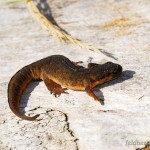
Lissotriton vulgaris vulgaris, Männchen in Landtracht mit noch sichtbarem stark reduziertem Rücken- und Schwanzkamm, Portmarnock (Port Mearnóg), County Dublin, 02.10.2012, Foto R. Gandola.
.
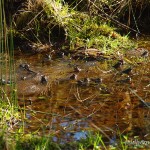
Rana temporaria temporaria am Laichplatz, Umgebung Glendalough (Gleann Dá Loch), Wicklow-Mountains-National Park (Páirc Náisiúnta Shléibhte Chill Mhantáin), County Wicklow, 18.02.2012, Foto R. Gandola.

Lebensraum von Rana temporaria temporaria, Umgebung Glendalough, Wicklow-Mountains-National Park (Páirc Náisiúnta Shléibhte Chill Mhantáin), County Wicklow, 13.03.2010, Foto R. Gandola.

Lebensraum Rana temporaria temporaria und Zootoca vivipara vivipara, Cleggan, Connemara (Conamara) County Galway, 22.04.2011, Foto R. Gandola.
.
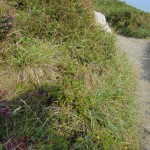
Lebensraum Zootoca vivipara vivipara, Howth (Binn Éadair), County Dublin, 15.09.2011, Foto R. Gandola.
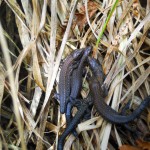
Zootoca vivipara vivipara, Jungtiere, Howth (Binn Éadair), County Dublin, 29.08.2012, Foto R. Gandola.
 Download als PDF
Download als PDF
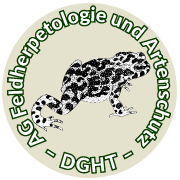

 Posted under:
Posted under: